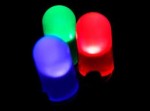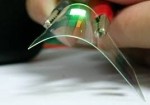New Energy Efficient Lighting, Now you will Payless Electricity.
We haven’t fully adapted to LEDs, yet new energy-efficient lights are already in demand.
Have you ever felt that technology is changing faster than humans evolved? Take your cell phone as an example: now carriers like T-Mobile are giving you the chance to update your smartphone every 6 months. Who doesn’t want a new gadget and have the latest technology at our fingertips every 6 months, right? Still, some restrictions and pain come with this unnecessary “self-pampering and adult spoilage” like contracts and high bills. This is why energy efficient energy is here to help.

New and Efficient
New technology is not cheap, and it’s because it takes a lot of development, time, expertise, and space efficiency. However, most technology saves time and our planet. We blogged before about bad light, street lighting that contaminates our beautiful sky. Now we have the LEDs which direct the luminosity towards where light is really needed. These LEDs are 85% more efficient than the regular incandescent light bulb and last up to 10-20 years. This sounds awesome but is not that good. The market for these LEDs will be saturated soon. Even if we are focused on efficiency, who cares about it if we stop producing LEDs? One problem is that we have to see how energy is generated. How can we efficiently control and maneuver the LEDs’ luminaries so that we won’t waste energy? We need to contemplate what’s coming next for energy efficiency.
OLEDs – Organic Light-Emitting Diodes
Wiki: An organic light-emitting diode (OLED) is a light-emitting diode (LED) in which the emissive electroluminescent layer is a film of organic compound which emits light in response to an electric current.
 The future in lighting is here. What will replace the LEDs? What? Some of us are not even over the high-efficiency light bulbs which contain mercury, and now I’m saying the LEDs are outdated? Well yeah, kind of… As of right now, these OLEDs are more for changing the design flexibility than for saving energy. The difference is that we will be able to better manage our energy. With new technology and smart grid buildings, we will see an on-demand response of luminosity. There’s a lot to do here: massive production, distribution, installation, intelligent controls, etc. High-quality lighting design will have a positive impact on us and the environment. The newest TVs and smartphones use this technology, especially the FLEX-screen phones and OLED TVs
The future in lighting is here. What will replace the LEDs? What? Some of us are not even over the high-efficiency light bulbs which contain mercury, and now I’m saying the LEDs are outdated? Well yeah, kind of… As of right now, these OLEDs are more for changing the design flexibility than for saving energy. The difference is that we will be able to better manage our energy. With new technology and smart grid buildings, we will see an on-demand response of luminosity. There’s a lot to do here: massive production, distribution, installation, intelligent controls, etc. High-quality lighting design will have a positive impact on us and the environment. The newest TVs and smartphones use this technology, especially the FLEX-screen phones and OLED TVs
Let us pay less electricity with New Energy Efficient Lighting
Lighting Controls
The new energy-efficient lighting with OLEDs works better with lighting controls that are not entirely new; this technology gives a built-in energy measurement capability. Proper management of luminaries saves more energy, not only on production but on the transportation of light, too.
How cool would it be if our roads didn’t need to be lit all night? Just think about this for a second. How much energy could we be saving if we turned off all lights in the world that were not efficiently in use? Probably there are a lot of you that might think that it is unsafe. Maybe, but this blog is about saving energy and efficiency. Having the entire city in the dark is unsafe; having light on “on-demand” and well managed is not.
Our Part
While waiting for this new technology to arrive, why don’t we all use our lights “on-demand” only? Turn off any light that is not in use. You have read some of our blogs, and we are always recommending that you do this. It is not that complicated. If you are already one of our customers, I would like to challenge you: how low can you get your kWh usage to in a single day? Only prepaid gives you the chance to see how many kWh you use per day. So, are you up for the challenge? I will create another blog about this and more about OLED technology. Stay tuned.
At Electricity Express, we know we can help. Follow our blog and videos for more energy-saving ideas. #ElectricityExpress – we’ve got your back!
http://blogs.dnvgl.com/utilityofthefuture/how-will-the-evolution-of-lighting-technology-impact-the-energy-efficiency-landscape
